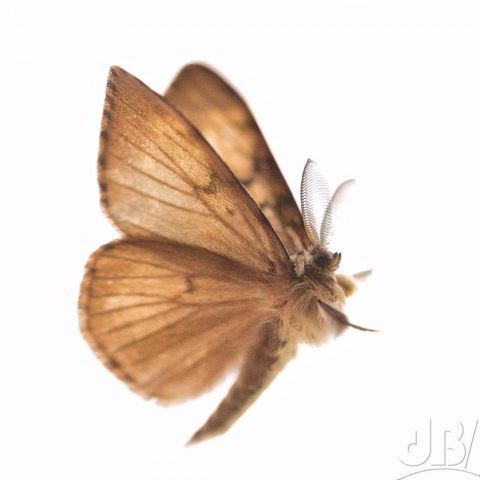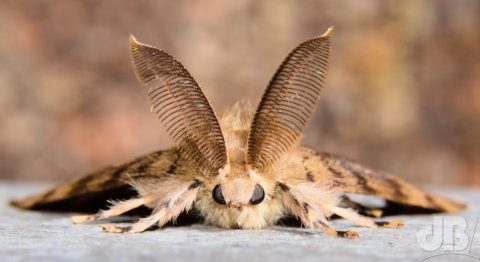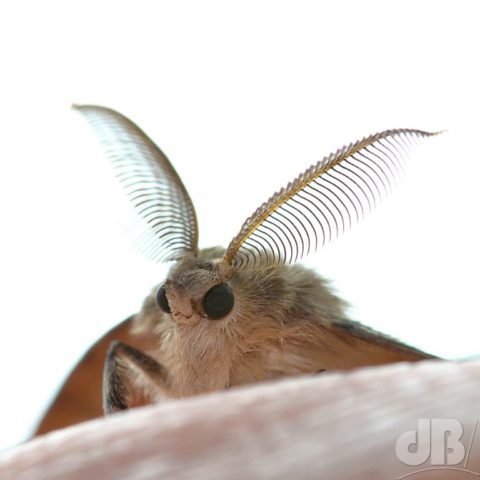The Gypsy Moth Lymantria dispar (Linnaeus, 1758) is perhaps the archetypal moth, browns and greys enormous protuberant antennae in the male, lots of high-frequency flapping, and definitely drawn to a candle…or in this instance, an ultraviolet, actinic lamp.

I remember seeing images of this creature in nature and science books when I was a child along with the caterpillar (larva) of the Puss Moth, the one that looks like it’s got a face painted on its rear end. I also remember being quite perturbed seeing images of such creatures close up, something about their seemingly alien nature when compared to the more usual faces of mammals and fish even that you see in children’s nature books.

The Gypsy Moth was common in 19th century in the East Anglian and Southern Fens, but was extinct as a breeding insect by the turn of the century. It remains a major pest of deciduous trees in mainland Europe and elsewhere and there are now colonies in London and southern England. The family name, Lymantria, means tree destroyer.

It is impossible to know whether this male specimen drawn in by my actinic lamp is a vagrant from the mainland carried in ahead of a forecast heatwave from the South East or whether it is part of a local population. The females are a lot bigger and not so agile on the wing. Intriguingly, the miniscule larvae are dispersed on the wind like seeds.
In North America, there is a call to rename the Gypsy Moth to have a less socially sensitive name. The suggestion is that it should be referred to by an English version of its French name, the Spongieuse, which alludes to the spongy mass of eggs laid by the females, so the Spongy Moth.